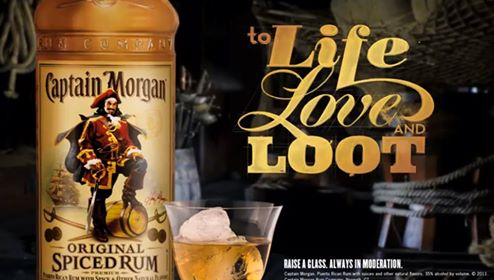From June 20-22 I had the privilege of attending the 30th annual AMDETUR (Mexican Resort Development Association) conference in Puerto Vallarta. The theme was "Three decades transforming tourism in Mexico."
The Mexican Resort Development Association was born in 1987 as a result of the rapid and sustained growth of Mexico’s tourist resort developers and the need to maintain a solid front for negotiating and working together with authorities and private enterprise, to develop standards and define an appropriate regulatory system that would support the Mexican tourist real estate industry.
The conference drew the key players in resort development, particularly in the timeshare industry. There were over 1,200 direct participants and another 450 attendees at various specialized workshops.
Opening of Conference with The Governor of the State of Jalisco, the Minister of Tourism, Chairman of the Board of AMDETUR, Carol Straw, Manager of Tourism Investments for JAMPRO
The list of participants, speakers and sponsors read like a who's who of the international timeshare industry: ARDA (American Resort Development Association), RCI, Interval, Dolphin Discovery (the current owner of Dolphin Cove in Jamaica), Holiday Systems Internation, Grupo Posadas, Pueblo Bonito Resorts, just to name a few.
There were memorable and enlightening panels featuring the top innovators in the Mexican tourism industry. A panel called "Pioneers: The evolution of a vision" was moderated by Mr. Ricardo Montaudon, the Group Managing Director of Latin America and Caribbean of Resorts Condominiums International, LLC a subsidiary of Group RCI.
Featured on this panel was Enrique de la Madrid, Minister of Tourism , Pablo Gonzalez Carbonell, Chairman of the Board of Royal Holiday, Mr. Kemeil Assad Rizk Aziz, President and CEO of Royal Resorts and Ernesto Coppel Kelly, President of Pueblo Bonito. Mr. Ernesto Coppel Kelly is a leading voice in Mexico’s tourism industry and is the founder and chairman of six internationally acclaimed Pueblo Bonito Resorts and Spas (Cabo/Mazatlan).
With Ernestro Coppel Kelly after he won the Gold Palm Award for Outstanding Visionary.
Among the other workshops of significant importance were : The New Consumer: Beyond the Millennials; New Opportunities and Challenges in the Digital Era; Smart Destinations – The Future of the Industry and Breaking Paradigms: Creating Unique Experiences.
The newly released 2016 Worldwide Shared Vacation Ownership Report, conducted by Oxford Economics and Leger for the ARDA International Foundation (AIF), has shown that the international timeshare industry is increasing in size, and has become more diverse in makeup and ready for future growth. The shared vacation ownership industry has shown consistent, sustainable growth over the past several years. Between 2014 and 2015, global sales increased 11.5% from $17.7 billion to $19.7 billion. Occupancy rates in the shared vacation ownership industry have been strong, registering 79.4% in 2015, an increase from 76.4% in 2014.
ARDA Research shows that the timeshare industry is forging ahead in the global markets. In fact, survey respondents indicate they will complete 91 new properties with more than 7,300 total units worldwide in 2017 and beyond – a strong sign.
With white sand beaches, crystal clear water, and year-round sunshine, Jamaica remains a vacationer’s paradise. While overloading the senses with breathtaking scenery, Jamaica also offers its own unique history, heritage, and cultural diversity that transports visitors to another world. Its proximity, reputation for safe travel, and cultural familiarity with American vacationers has made Jamaica a premier destination by first-timers and loyal returnees year after year.
Jamaica's timeshare legislation was passed last year, regulations brought into play, and is open for business on the first of May 2016. It was a great opportunity to speak with attendees at the AMDETUR conference highlighting the fact that Jamaica represents a new frontier with new opportunities and new prospects for timeshare developer and operators.
With Carlos Trujillo, President of AMDETUR.
Jamaica also had the unique privilege of being the only investment promotion government agency invited to attend, which speaks to the close relationship that Jamaica has fostered with AMDETUR, which was facilitated through PROMEXICO, Mexico's investment and trade agency. My counterpart, César Armando Espinosa , PROMEXICO's Subdirector for Latin America and the Caribbean, has been an outstanding partner in fostering mutual cooperation between JAMPRO and PROMEXICO for the benefit of both our private sectors.
Jamaica has been promoting various Shovel Ready Tourism Investment Projects and JAMPRO has been leading on facilitating investors through the implementation of a seamless process that takes them easily from the point of conception to construction. Jamaica is estimated to receive 4.2 million visitors this year, which represents a 5 percent increase on the 3.84 million tourists the country received in 2016.
Jamaica has been working towards broadening our economic growth through tourism diversification and this conference presented a substantial platform to remind investors that there is still a lot of room for hotel and timeshare investments, both large and small.
At the 2016 World Travel Awards, destination Jamaica as well as several local resorts and tourism partners came away big winners, winning several important awards, which included:World’s Leading Wedding Destination, World’s Leading Cruise Destination, World’s Leading All-Inclusive Company (Sandals Resorts International), World’s Leading All-Inclusive Family Resort Brand (Beaches Resorts), World’s Leading New Island Resort (Meliá Braco Village), and World’s Leading Villa Resort (Round Hill Hotel & Villas).












